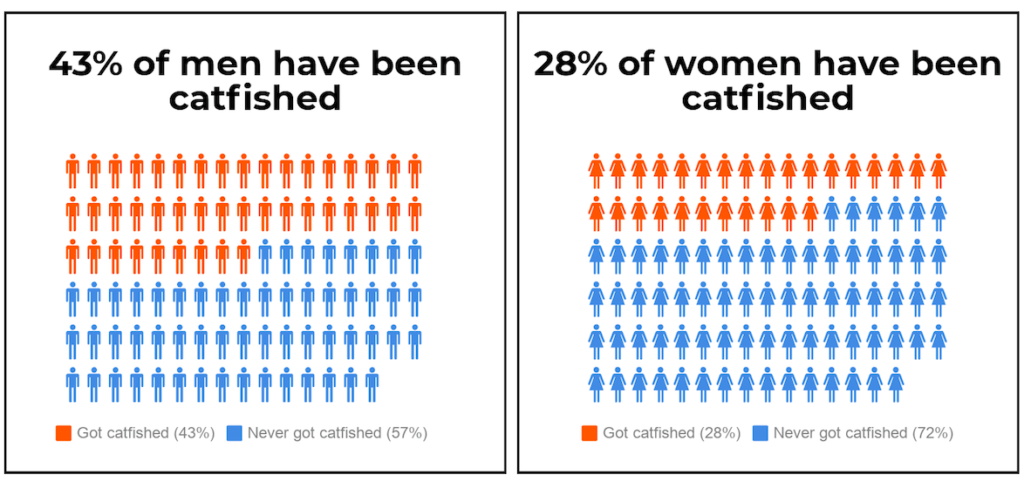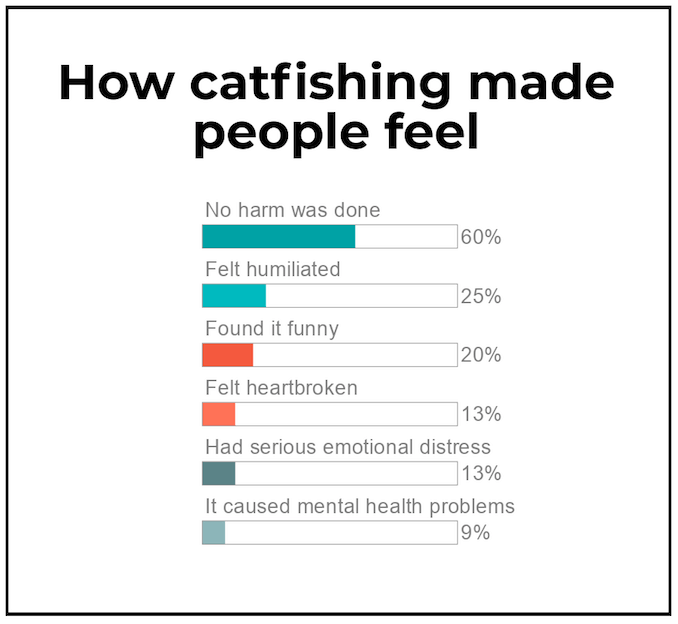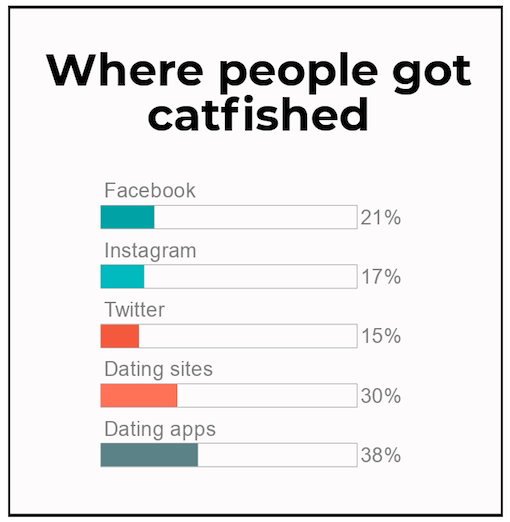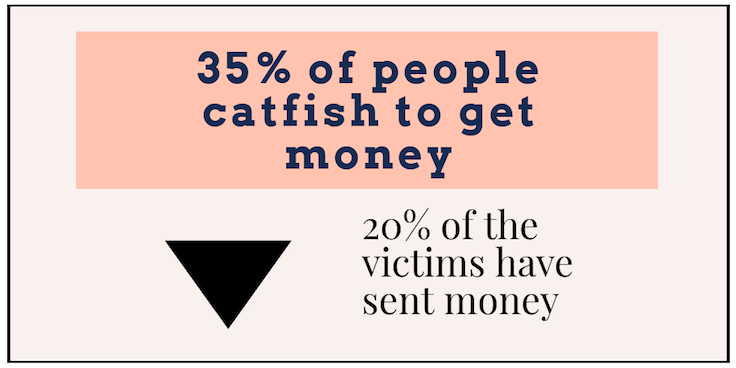Catfishing is one of the most popularized dating terms out there. Hell, there’s even a TV show about how prominent it is for people out there, unexpectedly, get catfished from people who claim to be someone else.
Thing is, while some find catfishing to be harmless fun, there are cases where people have gotten buried emotionally after falling victim to it. That’s because emotions are real when you have a shared connection with someone, regardless of them being the person they claim to be or not.
For instance, unfortunately, we find a lot of readers contacting us because they feel as if they’ve been catfished by someone pretending to be Harriet. These people often send money to random people on social media or develop feelings for a person who, in fact, isn’t Harriet. That’s why we’ve done some research into catfishing to better understand it.
Surveying 300 people, we found that there are still a lot of people getting catfished by others. It’s a serious problem because it’s so difficult to monitor from social networks like Instagram, Twitter and Facebook, where random users pretend to be porn stars, camgirls and celebrities, among other people.
Following our catfishing survey, we’ve summarized the key findings to help understand the f’ed up dating trend a little bit more in-depth, showing how scary and how popular it still is. Take the results and use them to your benefit, because it’s important we, as a community, try to stop catfishing once and for all.
Who’s most likely to being catfished?
The results above might suggest that girls are less trusting when it comes to believing a person is who they claim to be than men. To support that theory, men were about 25 percent more likely to be catfished.
How often are they catfished?
- 40% of people have been catfished just once
- 25% have been catfished twice
The old adage, “fool me once, shame on you. Fool me twice, shame on me,” couldn’t be more relevant than in catfishing. That said, it’s hard to gauge how or why people fall victim to the dating trend more than once.
It’s worrisome that there seems to be a certain person who gets catfished, with 20 percent of men who have been catfished admitting to falling victim more than five times! Whether it’s due to being naive or feeling desperate, respondents didn’t say.
How catfishing made people feel
The good news in the above results is that, for the most part, catfishing victims weren’t impacted too badly. Unfortunately, the bottom half of the results (35 percent), showed signs of emotional pain, and that’s a concern. For those who catfished someone, it makes us wonder if they’re aware of their actions on others.
Where people got catfished
As you might expect, most people admitted to have been catfished on social media or dating sites and apps.
Who were victims catfished by, or rather, who did they think they were talking to?
- 73% were just pretending to be normal attractive people
- 20% were catfished by fake model, pornstar and camgirl profiles
- Less than 2% were catfished by mainstream actors, singers or celebrities
The results above aren’t too surprising, considering that most people have a difficult time believing that they’re genuinely messaging with a real A-list celebrity and it’s easier to trick someone into thinking they are talking to a normal attractive person. That said, 20 percent is still a high percentage of people who are believing they are talking with models, pornstars and camgirls.
The real concern, in our opinion, is that the models, pornstars and camgirls aren’t being verified on social networks, which opens up the possibility of being catfished.
What’s the purpose of catfishing?
While many people might think catfishing is just a way for a bored person to pass the time, in fact, our study showed that 35 percent of people who do it is for money. That’s a scary result, because, per our findings, 20 percent of catfishing victims have sent money. In most cases, the amount of money was $20 or below, but, in extreme situations, 13 percent sent as much as $500 and, worse, 6 percent sent between $1,000 and $10,000!
As for other reasons why catfishing happens, 32 percent of people said it was for no reason at all, other than the fact that they could do so. And, according to our study, another 30 percent catfished others to appear more attractive than they really are, using someone else’s image as their own.
Nude photos and video
20% of people said the reason they were catfished was to trick them into sending sexually explicit photos or videos. And 22% of them actually sent them.
This is an alarming number of people sending nude photos to strangers over the internet, specially given the weakness of revenge porn laws and the lasting damage this content can do to a person’s reputation and career.
More reasons for catfishing
Some of the other reasons for catfishing: 5 percent wanted to appear more wealthy, and 3 percent were just bullying people they already knew in real life. It’s sad, really.
Following our survey, it’s clear that catfishing is still a growing concern, with no clear sign as to motives behind why it happens. However, the results are a good indicator that it’s something we need to be aware of and be more cautious about. There are some mean people out there, so it’s on us to dig as deep as possible to make sure none of us fall victim to the act.








